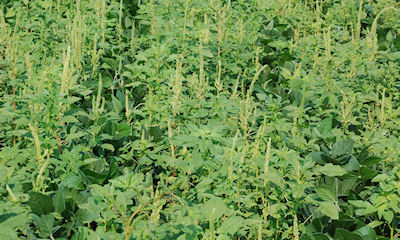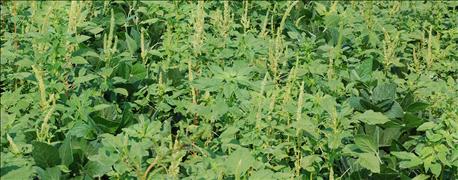
Going into July, a lot of southern Illinois farmers still haven't planted soybeans. Not double-crop soybeans, just regular, single-rotation soybeans. It's been too wet.
A week ago, Kelly Robertson, who farms in the Benton area, was weighing his weed-control options. Weeds have broken through his residual program, and he's faced with another burndown. Then he said something that should be on every southern Illinois farmer's mind.
"We have to be careful this late in the season with weed control," Robertson notes. "It's getting so late, some of these herbicides could hang around until corn planting next spring."

Is it too late to use a residual herbicide?
University of Illinois weed scientist Aaron Hager agrees. This time of year, Hager says growers need to be especially careful when spraying products that contain fomesafen (Flexstar, Prefix, Dawn, Rhythm and Marvel).
"According to the label, most products that contain fomesafen have a 10-month rotational interval for corn," Hager notes.
Hager says the big question is whether soil moisture stays high. If it does, the residual activity of many herbicides is shorter because the soil exchange sites are bonded to water molecules, which makes the herbicide available for degradation.
However, if it dries up, those same exchanges sites will hold on tightly to herbicide molecules. Most will remember the numerous discussions on herbicide carryover during the 2012 drought.
If a grower still wants to use a PPO inhibitor for residual control of those tougher weeds, Hager recommends turning to aclifluorfen (Ultra Blazer) or lactofen (Cobra). He notes both will provide the same type of PPO activity without lasting so long in the soil.
Hager also says growers who suspect the residual activity may be a problem next year should consider switching up the rotation or applying less residual herbicide.
"This late in the year, we really need to be mindful that the herbicide program is not only filling the current need, but that we're also setting ourselves up to succeed next year," Hager notes.
Lastly, what happens if a grower blankets the field with fomesafen this year? Is there a way to make sure next year's corn crop won't be damaged by residual activity?
Hager says paying a professional lab to do bio-assays is quite expensive. But, an enterprising farmer can create a pretty good model next spring.
Hager says the key is scraping the top couple inches of soil from fields that are suspected of having residual herbicide left over. Mix samples from several areas and plant corn seed in the little test plot. Also, be sure to pull soil from a check field. This will even the playing field and let growers rule out things like poor germination, Hager says.
About the Author(s)
You May Also Like




